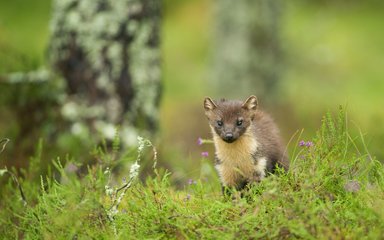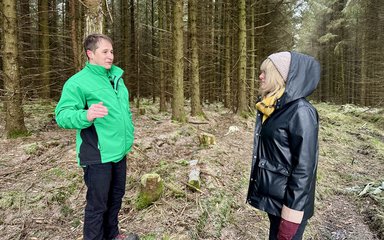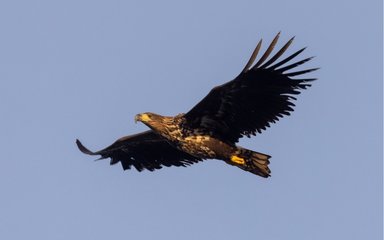
Pine martens are cat-sized members of the mustelid family along with stoats, weasels, polecats, badgers and otters. As native omnivores, they play an important role in the balance of woodland ecosystems and feed on what is seasonally abundant.
Once widespread across the UK, habitat loss and human activity has drastically reduced their numbers, with only a small and fragmented population remaining. In 2019 we released 18 pine martens in the Forest of Dean and now populations are recovering across the country.
Pine marten statistics
- lifespan: eight years (maximum)
- length (excluding tail): males 51-54cm, females 46-54cm
- weight: males 1.5-2.2kg, females 0.9-1.5kg

Pine marten habitat and breeding
Pine martens like to make their dens in hollow trees or the fallen root masses of pine trees - which is probably where their name comes from. Although they prefer well-wooded areas with plenty of cover, cliffs and rocky hillsides are also sometimes used as den sites. Pine martens mainly feed on small rodents, birds, insects and fruit.
Pine martens build their breeding nests among rocks, in hollow trees and even in bird or squirrel nests. Up to five young are born, blind and hairless, in early spring. The youngsters stay with their mothers for around six weeks, and leave their dens usually by the end of spring in mid-June.
Did you know? Pine martens have semi-retractable claws, which makes them great tree climbers.
What does a pine marten look like?
Pine martens have long bodies and bushy tails with rich, brown fur and a distinctive cream or yellow throat patch known as a bib. They have round ears and relatively small legs, like the other animals in their wider species family.
Spotting tips
Pine martens are elusive creatures and can be difficult to spot in the wild, especially as they are most active at dawn and dusk. Much like beavers, it is easier to spot evidence that pine martens are nearby rather than seeing the animals themselves. Head to places where they are known to live and look for droppings and footprints.




